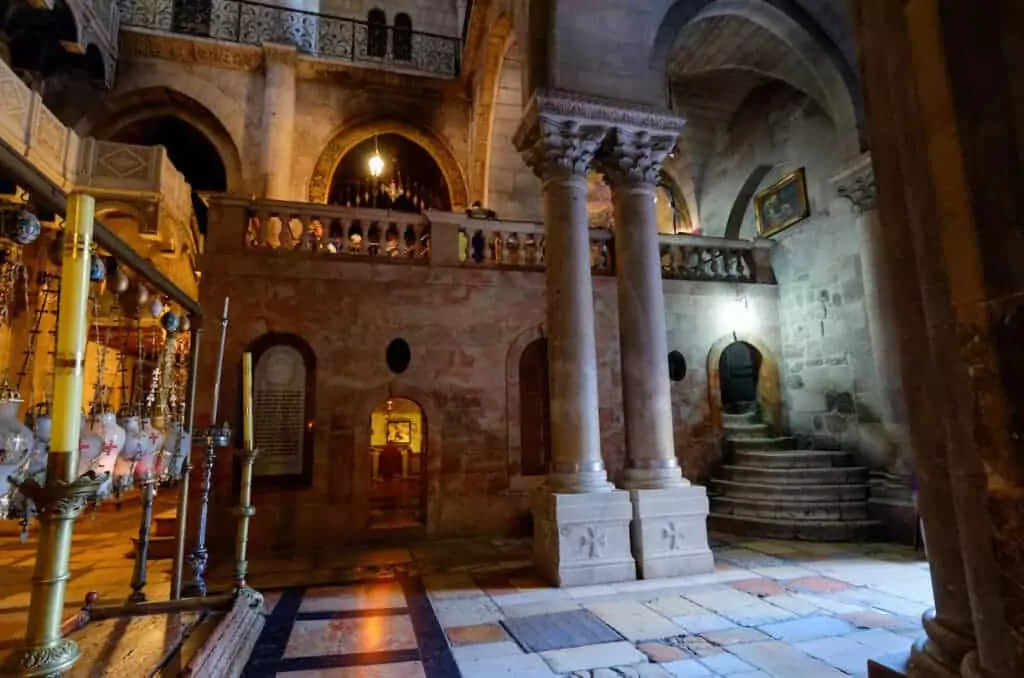
Jesus’ Suffering at Golgotha
Friday Morning
This is a familiar path for any believer—Gethsemane, trials, crucifixion. The passion of Jesus reaches its finale after he carries his cross to the site of his crucifixion. But what was that place called? The Gospels make that answer very clear, but subsequent years have added a noun to that place: “Hill of Calvary” or “Mount Calvary.” That last title has become part of the name of many an evangelical church! Actually, there was no “Mount Calvary.”
I know that claim may surprise and even shock many readers, but let us look at the evidence. There is no reference anywhere in the New Testament that the site of Jesus’ crucifixion was on a “mount” or “hill.” The Bible uses one word for the site, and that word is “Golgotha” (Matt 27:33; Mark 15:22; John 19:17). It’s the Aramaic word for “skull.”
Matthew, Mark, and John translate this word with the Greek expression kraniou topos, or “skull place.” So where did the word “Calvary” come from? The Latin Vulgate translates the Greek “place of the skull” as Calvariae locus. The Latin word for “Calvary” means “skull.” So our word “Calvary” comes from the Latin phrase “place of the skull (Calvariae).” That is a translation of the Gospel’s Aramaic phrase Golgotha (“skull”), describing the location of Jesus’ crucifixion. I emphasize again that nowhere in the Greek New Testament or in its Latin translation is there any mention of a hill called Mount Calvary. However, many a Gospel song and artistic rendition celebrate it as such.
It isn’t easy to ascertain how the tradition of it being a hill arose. Perhaps it entered hymnody through General Gordon’s incorrect identification of the rocky edge of an old quarry north of Jerusalem as “Skull Hill.” There is no need for the place of execution to be on a hill since being beside a main thoroughfare into a western gate of Jerusalem provided enough visibility for passersby to see it and mock the condemned (John 19:20; Heb 13:12). The most reliable location today for where Golgotha would have been is inside the Church of the Holy Sepulcher, and there is no hill. The two small chapels of Calvary are on top of an old stone outcropping, which in no way resembles a hill. Why was this gory location called “Skull?” It was either because it was a place of death or, as John 19:41 tell us, it also served as a cemetery.
It was an ugly place, and Jesus was crucified between two ugly criminals. Jesus had replaced Barabbas, whom authorities released earlier in the day. I remind the reader of the contrast on the Mount of Transfiguration when Jesus was between two great Old Testament worthies, Moses and Elijah. That foretaste of His glory stood in stark contrast to the portrait of His suffering here on Golgotha.
Prayer for Reflection:
“Lord Jesus, the apostle Paul cried out, ‘God forbid that I should glory except in the cross of my Lord Jesus Christ’ (Gal 6:17). The hymn writer wrote: ‘Nothing in my hand I bring, simply to thy cross I cling.’ It is so easy to forget your suffering and that it took place for me. The next time I take the communion bread, may I realize like never before that your body was broken on the cross—for me and that your precious blood was shed—for me!”
All Devotionals:
8 Daily Devotionals from Palm Sunday to Easter
©2023 William Varner. Used with permission.
About The Author

William Varner
William Varner teaches at The Master’s University and is a pastor/teacher at Grace Baptist Church in Santa Clarita, Calif. He has written twenty books, including Passionate About the Passion Week: A Fresh Look at Jesus’ Last Days (Fontes Press, 2020).







